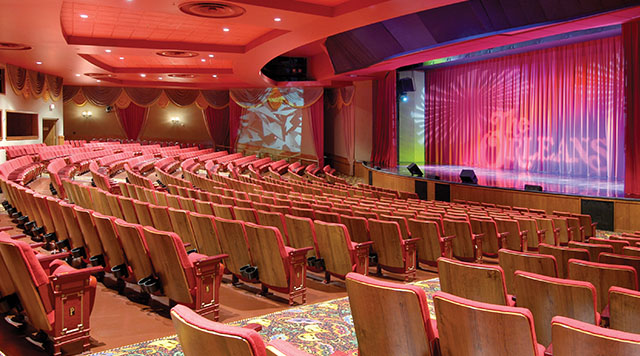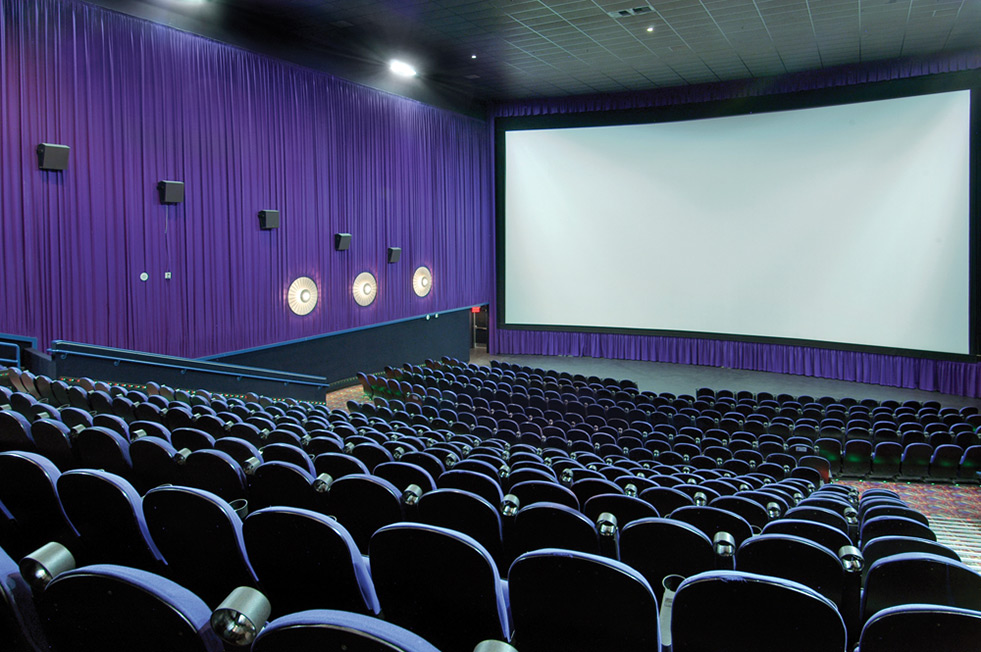New Orleans Casino Theater

- New Orleans Casino Theaters Showtimes
- New Orleans Hotel And Casino Movie Theater
- New Orleans Casino Theater

After the Théâtre St. Pierre closed due to poor construction, the theater manager, Louis Tabary envisioned a grand theater just a block away with a French name, the Théâtre d’Orléans. Construction begins on the original Orleans Theatre in 1806. The War of 1812 delayed the opening until 1815 when it finally opened its doors for Creole society to once again enjoy French Opera. The performances at the grand French-provisional structure were short lived after the Theatre was completely destroyed by fire in 1816. In 1817, entrepreneur John Davis, hoping to make his mark on New Orleans’ rich social scene, purchased the land and re-built the Orleans Theatre and added the Orleans Ballroom: the oldest, most historic ballroom in New Orleans today. Davis hired British born architect, Henry Latrobe, designer of the U.S. Capitol, to build the Theatre and Ballroom in hopes of outshining any competition.
- NEW ORLEANS — New Orleans will this week allow bars to open at 25% capacity as it further eases restrictions aimed at preventing the spread of COVID-19.
- With over 2,000 slot machines, 100 table games, a poker room, hotel and nightclub, many would argue that it is the best casino in not only New Orleans, but Louisiana. It is by law the only land-based private casino in the state and referred to as the official gaming establishment.
Century Orleans 18 and XD. The Croods: A New Age (2020) Freaky (2020) Vanguard (2020) Honest Thief (2020). Welcome Back to Movie Theaters.
When it opened in 1819, the Orleans Theatre & Ballroom became the setting for the most select affairs in New Orleans. In addition to European Opera performances, events held here were masquerade balls, carnival balls as well as Quadroon Balls, at which Creole women of color, quadroons, were selected to be the mistresses of wealthy Creole gentleman, in a system known as plaçage. The Theatre served as the most important venue for Creole society. Prestigious operas, such as Gioachino Rossini’s La Comte Ory, La Dame del Lago and La Gazza Ladra made their U.S. debut in the Theatre. Davis spared nothing in the design and construction. The 1300 seat Theatre quickly placed New Orleans on the map as the opera capital of the United States throughout the nineteenth century.One of the most notable guests to visit was the French aristrocrat and military officer, Marquis de Lafayette, who entertained there during his visit to New Orleans in 1825.
In 1828, a fire burned the old Capitol building and forced the State Legislature to temporarily relocate its assembly space in the Orleans Ballroom. It is said, but unverified, that Andrew Jackson announced his candidacy for President of the United States of America within these staunch walls. From 1852 – 1881, the First District Court held session in the ballroom.The Theatre and Ballroom were losing their luster in the 1830s with the opening of a grander ballroom at the new St. Louis Hotel. In 1866 a fire swept through the area, destroying the Theatre, only the Orleans Ballroom was spared. By 1881, both the Orleans Theater and Ballroom had been acquired by the Sisters of the Holy Family for use as a school, orphanage and convent. The Sisters of the Holy Family were at that location for 83 years, until the need for expansion pressed them to sell the property to hotel interests. New additions would replace structures built by the nuns, but the Orleans Ballroom would remain and begin a life more closely attuned to its opulent beginnings.
New Orleans Casino Theaters Showtimes

New Orleans Hotel And Casino Movie Theater

After the Théâtre St. Pierre closed due to poor construction, the theater manager, Louis Tabary envisioned a grand theater just a block away with a French name, the Théâtre d’Orléans. Construction begins on the original Orleans Theatre in 1806. The War of 1812 delayed the opening until 1815 when it finally opened its doors for Creole society to once again enjoy French Opera. The performances at the grand French-provisional structure were short lived after the Theatre was completely destroyed by fire in 1816. In 1817, entrepreneur John Davis, hoping to make his mark on New Orleans’ rich social scene, purchased the land and re-built the Orleans Theatre and added the Orleans Ballroom: the oldest, most historic ballroom in New Orleans today. Davis hired British born architect, Henry Latrobe, designer of the U.S. Capitol, to build the Theatre and Ballroom in hopes of outshining any competition.
When it opened in 1819, the Orleans Theatre & Ballroom became the setting for the most select affairs in New Orleans. In addition to European Opera performances, events held here were masquerade balls, carnival balls as well as Quadroon Balls, at which Creole women of color, quadroons, were selected to be the mistresses of wealthy Creole gentleman, in a system known as plaçage. The Theatre served as the most important venue for Creole society. Prestigious operas, such as Gioachino Rossini’s La Comte Ory, La Dame del Lago and La Gazza Ladra made their U.S. debut in the Theatre. Davis spared nothing in the design and construction. The 1300 seat Theatre quickly placed New Orleans on the map as the opera capital of the United States throughout the nineteenth century.One of the most notable guests to visit was the French aristrocrat and military officer, Marquis de Lafayette, who entertained there during his visit to New Orleans in 1825.
New Orleans Casino Theater
In 1828, a fire burned the old Capitol building and forced the State Legislature to temporarily relocate its assembly space in the Orleans Ballroom. It is said, but unverified, that Andrew Jackson announced his candidacy for President of the United States of America within these staunch walls. From 1852 – 1881, the First District Court held session in the ballroom.The Theatre and Ballroom were losing their luster in the 1830s with the opening of a grander ballroom at the new St. Louis Hotel. In 1866 a fire swept through the area, destroying the Theatre, only the Orleans Ballroom was spared. By 1881, both the Orleans Theater and Ballroom had been acquired by the Sisters of the Holy Family for use as a school, orphanage and convent. The Sisters of the Holy Family were at that location for 83 years, until the need for expansion pressed them to sell the property to hotel interests. New additions would replace structures built by the nuns, but the Orleans Ballroom would remain and begin a life more closely attuned to its opulent beginnings.